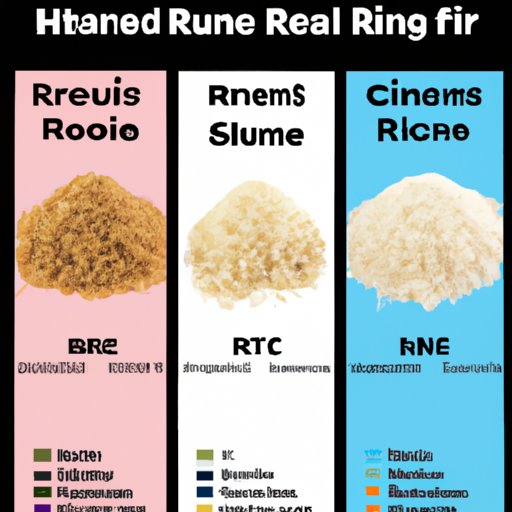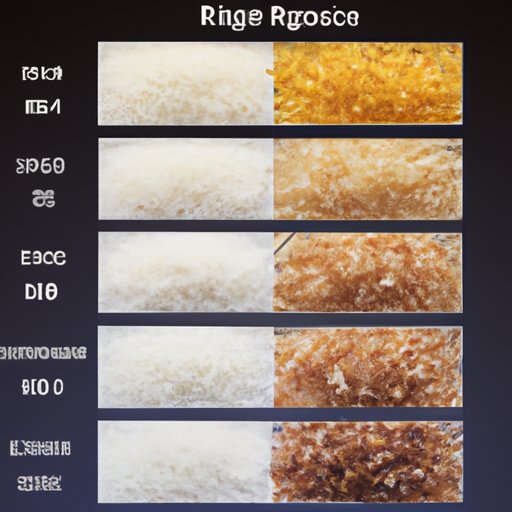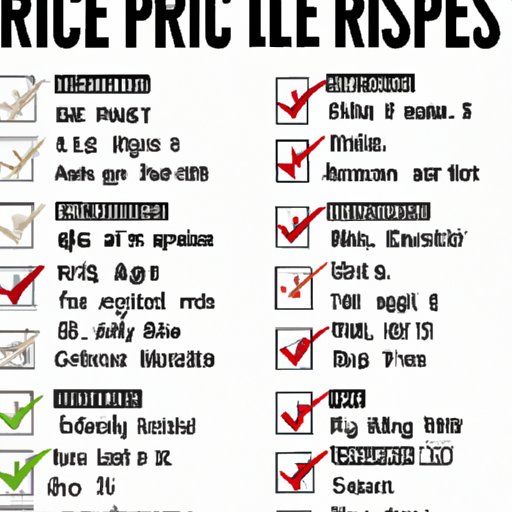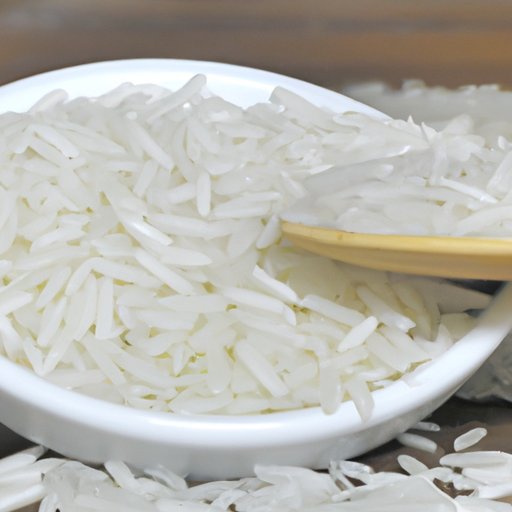Introduction
Rice is a staple food in many cultures around the world. It is a versatile grain that can be cooked in many different ways and is used as an ingredient in a variety of dishes. But what kind of rice is healthy? This article will explore the differences between various types of rice and examine their nutritional value in order to identify which type of rice offers the most health benefits.
Definition of Rice and Its Health Benefits
Rice is a cereal grain that is cultivated from the Oryza sativa plant. It is a staple food in many parts of the world and is consumed in a variety of forms, including white rice, brown rice, basmati rice, jasmine rice, parboiled rice, and wild rice. All types of rice contain essential macronutrients, vitamins, minerals, and phytonutrients that provide various health benefits.
Rice is an excellent source of carbohydrates, which provide energy for the body. It is also a good source of fiber, which helps to maintain a healthy digestive system. Additionally, rice contains a wide range of vitamins and minerals, such as B vitamins, vitamin E, zinc, magnesium, and iron. Finally, rice is a good source of phytonutrients, which are compounds found in plants that offer antioxidant and anti-inflammatory benefits.

Comparison of Various Types of Rice and Their Health Benefits
When it comes to choosing a healthy type of rice, there are several factors to consider. Let’s take a look at some of the most popular types of rice and compare their health benefits.
White Rice vs Brown Rice
White rice is a refined grain that has been stripped of its bran and germ, which remove much of the fiber, vitamins, and minerals. Brown rice, on the other hand, is a whole grain that retains its bran and germ, making it a more nutritious option. Brown rice is higher in fiber and contains more vitamins, minerals, and phytonutrients than white rice.
Basmati Rice vs Jasmine Rice
Basmati and jasmine rice are both long-grain varieties of rice. Basmati rice is slightly lower in calories than jasmine rice and has a nutty flavor. Jasmine rice is slightly sweeter and has a softer texture. Both types of rice have similar nutrient profiles and are considered healthy options.
Parboiled Rice vs Wild Rice
Parboiled rice is a process that partially cooks the grains before they are milled. This process helps to preserve some of the nutrients in the rice, making it a healthier option than regular white rice. Wild rice is an aquatic grass seed that is higher in protein and fiber than other types of rice and is a good source of antioxidants.
Exploring the Nutritional Value of Different Types of Rice
Now that we’ve compared the various types of rice, let’s take a closer look at the nutritional value of each type.
Macronutrients of Rice
All types of rice are primarily composed of carbohydrates, with small amounts of fat and protein. The exact amount of each macronutrient varies depending on the type of rice. White rice is typically higher in carbohydrates and lower in fat and protein, while brown rice is higher in fat and protein and lower in carbohydrates.
Vitamins, Minerals, and Phytonutrients in Rice
Rice is a good source of several essential vitamins and minerals, including B vitamins, vitamin E, zinc, magnesium, and iron. Additionally, brown rice is a good source of phytonutrients, which are compounds found in plants that offer antioxidant and anti-inflammatory benefits. These phytonutrients may help to reduce the risk of certain chronic diseases.

Healthiest Type of Rice for Weight Loss Diets
For those looking to lose weight, it is important to choose a type of rice that is low in calories and high in fiber. Low-glycemic index rices, such as basmati and jasmine rice, are slower to digest and can help to keep you feeling fuller for longer. High-fiber rices, such as brown rice and wild rice, are also beneficial for weight loss as they help to keep you feeling full and satisfied.
Cooking Methods to Maximize the Health Benefits of Rice
The way in which you cook your rice can also affect its nutritional value. Pressure-cooking is a quick and easy way to prepare rice that helps to preserve some of the vitamins and minerals. Steaming and boiling are also healthy cooking methods that help to retain the nutrients in the rice. For maximum health benefits, it is best to avoid deep-frying or stir-frying your rice.

Nutritional Breakdown of Different Types of Rice
Let’s take a look at the nutritional breakdown of some of the most popular types of rice.
Carbohydrates
White rice contains 77g of carbohydrates per 100g serving, while brown rice contains 72g of carbohydrates per 100g serving. Basmati rice contains 78g of carbohydrates per 100g serving, while jasmine rice contains 79g of carbohydrates per 100g serving. Parboiled rice contains 73g of carbohydrates per 100g serving and wild rice contains 74g of carbohydrates per 100g.
Fats
White rice contains 0.4g of fat per 100g serving, while brown rice contains 1.8g of fat per 100g serving. Basmati rice contains 0.4g of fat per 100g serving, while jasmine rice contains 0.5g of fat per 100g serving. Parboiled rice contains 0.6g of fat per 100g serving and wild rice contains 0.9g of fat per 100g.
Protein
White rice contains 6.7g of protein per 100g serving, while brown rice contains 7.7g of protein per 100g serving. Basmati rice contains 7.7g of protein per 100g serving, while jasmine rice contains 6.8g of protein per 100g serving. Parboiled rice contains 8.3g of protein per 100g serving and wild rice contains 9.1g of protein per 100g.

A Guide to Selecting Healthy Rice Options
When selecting a type of rice, it is important to consider the following factors:
Whole Grain vs Refined Rice
Whole grain rices, such as brown rice, are more nutritious than refined rices, such as white rice. Whole grain rices are higher in fiber, vitamins, and minerals, and contain more phytonutrients than refined rices.
Organic vs Non-Organic Rice
Organically grown rices are free of pesticides and chemical fertilizers, which makes them a healthier option than non-organic rices. Organic rices are also better for the environment, as they do not use synthetic chemicals that can harm the soil and water.
Natural vs Processed Rice
Natural rices, such as brown rice and wild rice, are unprocessed and retain more of their nutrients than processed rices, such as parboiled and instant rices. Natural rices are also generally lower in sodium and added sugar than processed rices.
Conclusion
In conclusion, there are many types of rice available, and each type offers different nutritional benefits. When selecting a type of rice, it is important to consider the type of grain, whether it is organic or non-organic, and whether it is natural or processed. Brown rice and wild rice are generally considered the healthiest types of rice, as they are higher in fiber, vitamins, minerals, and phytonutrients than other types of rice. Additionally, cooking methods such as pressure-cooking, steaming, and boiling can help to maximize the health benefits of rice. Finally, it is important to remember that all types of rice can be a part of a healthy diet when eaten in moderation.
(Note: Is this article not meeting your expectations? Do you have knowledge or insights to share? Unlock new opportunities and expand your reach by joining our authors team. Click Registration to join us and share your expertise with our readers.)
